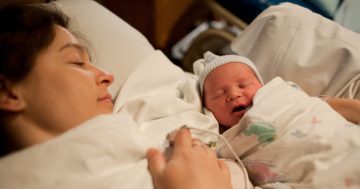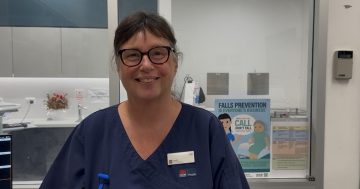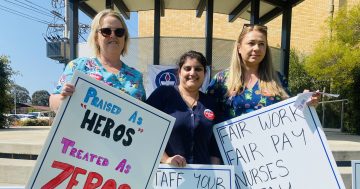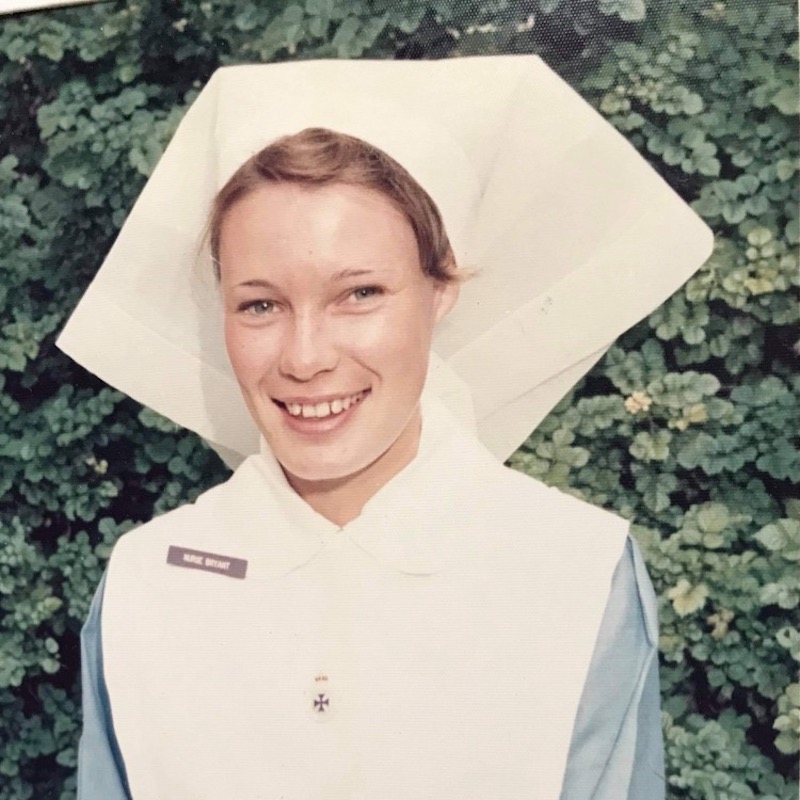
As a young qualified nurse, Di Green (nee Bryant) embarked on a journey from Royal North Shore Hospital in Sydney, to the NSW Blue Mountains and then to Goulburn Base Hospital. Photo: Supplied.
Having just finished her last shift as a midwife at Goulburn Base Hospital recently, Di Green replied to a flood of well-wishers who are grateful for her work ethic, wisdom and dedication.
“Remember,” she wrote back, “you grow into midwifery one woman and baby at a time.”
Looking back, Di estimates she helped thousands of women give birth.
“I have done 36 years at Goulburn Base,” she says.
Each birth was a privilege for Di. She is adamant her efforts are secondary to women’s extraordinary strength and courage through childbirth.
“Seeing how amazing they are – men are, too – but women often underrate themselves,” says the mother of two. “When you see what they do in child birth, you think, ‘Oh my gosh, they are so strong.’”
Di says even those who lost their baby showed remarkable stoicism.
“They find a new strength – they are absolutely beautiful,” she says. “There’s that saying – ‘Women are like a tea bag; you don’t know the strength of them until they are in hot water – there is a lot of truth in that.”
The eldest of six children, Di’s father, Fred, and mother, Eileen Bryant, a teenage bride, had their children over 10 years. Toiling away in a Pyrmont factory, in Sydney, Fred completed a first-aid course that set him off studying his way into the ambulance service.
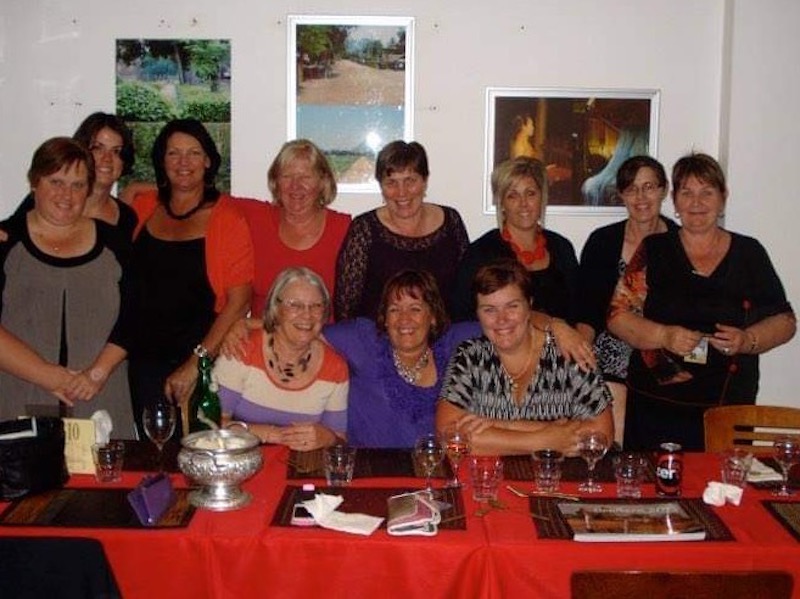
Celebrating International Midwives Day: Back row (from left): midwife Kathy Staines, midwife Nicole Webster, enrolled nurse Terrie Lang, midwife and after-hours manager Mary Mitchell (Smith), midwife Lynn Wenham, clerical support Renaye Smith, midwife Sandra Scott, and maternity and paediatric manager Liz Simpson. Front row (from left): midwife Di Green, midwifery student Maree Harvey Brown and midwife Sharon Divall. Photo: Supplied.
Strong, determined and hard-working, Eileen left her factory job to train as a nurse’s aid, became an enrolled nurse and inspired Di, who, on leaving school, trained at the Royal North Shore Hospital to become a nurse.
Di then married, and having moved into a home in the NSW Blue Mountains with two little children, she was in a busy routine of work and going to playgroup and preschool when her husband was offered a job at the NSW Police Academy in Goulburn in early 1985.
“I had only known Goulburn to be cold,” she says. “It snowed three weeks after we arrived here and I only had Sydney summer clothes. So, yes, it was cold.”
Goulburn Base Hospital snapped up Di’s services, rostering her in the general ward, accident and emergency, medical and surgical wards, then in the space of a month, the Blackley quads arrived and three sets of twins, so she crossed over to midwifery to help, and that’s where she stayed.
Senior midwives, including Katie Yeadon, Joan Neale and Judy Hunt extended Di’s training beyond the science of midwifery.
“They were very, very intuitive,” she says. “They watched these women in labour intensely. They didn’t leave them. They watched and they knew by the look on their faces where they were at [with their childbirth], and I think, still, it is all the education you do – I think with midwifery in particular – it is a very practical, hands-on, learning-to-read-people experience.”
Di says women in labour are at their most vulnerable.
“That is where you have such an impact, just building them up, giving them support, encouragement and giving them the boost they need along the way – doing a bit of education,” she says.

Di Green regards her midwife career as a privilege. Photo: Supplied.
“You have to realise what state women are in when they come in. Some come well prepared – they have done the reading, Calmbirth [antenatal course] and hypnotherapy. Calmbirth is a brilliant resource and they come in well prepared mentally.
“Other girls don’t look at a thing, come in and expect it is all going to go wonderfully well. There is a huge range of emotions – it is a life-skill experience.
“Your first birth is a scary, scary thing. You come in thinking, ‘Oh my god, how am I going to survive this?’ But once you have done it, it’s like, ‘OK, I can do this again.’ We are silly enough to come back for more,” says Di, laughing when recounting women questioning themselves their second time around.
When Di arrived in Goulburn, several doctors and gynaecologist Dr Noel Docker were helping deliver babies.
“If you rang Dr Docker he would be at your shoulder before you put down the phone,” she says. “At nighttime, he always came in his kaftan, a source of great amusement to most of us because I’m sure there was nothing on underneath it. We made him two new kaftans when he left town.”
Dr Docker hosted Christmas gatherings at which the maternity staff and doctors, including Tom Anderson, Keith Little, Michael Burgess, Bruce Gerard and Jack Micklethwaite, attended.
“One year, we made them hand moulds,” says Di. “We used some surgical gloves for the plaster of Paris moulds set on stands for Christmas presents. Noel Docker’s hands were huge, all his fingers at double length, and Michael Burgess was always unsure of something so we had him with crossed fingers.
“Jack Micklethwaite was always a stalwart. Tom Anderson would always ring us on a Saturday or Sunday morning if he was on call for the weekend: ‘Sister, is there anyone in labour?’ He was going to make bread and needed to have his hands washed and absolutely sterile.”
One day, Di’s daughter collected her from work and watched her among her workmates.
“You are all a bit like family – you help each other solve everything that is going on,” she observed, capturing the essence of midwifery.
Original Article published by John Thistleton on The RiotACT.







